5 Reasons ‘The Lone Ranger’ is As Good a Movie as ‘The Artist’
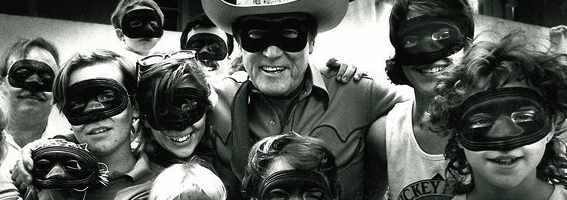
With all the hostility being unleashed on the 21st century-Lone Ranger now in theaters, I felt a growing need to speak against the unsettling massacre of bad reviews, and their yielders. When a film’s audience rating on IMDb is nearly 7/10, but the Top Critic’s average on RottenTomatoes is 11%… the critics are mistaken, and killing a great film.
I saw The Artist 4 times in Theaters in 2011 and in 2 languages technically (saw it in Vienna and they actually took the time to dub the otherwise silent film’s only and last line, ‘with pleasure’, into ‘mit Vergnügen’) — I enjoyed the hell out of that film! Who cares that it has a horribly pretentious title? Who cares that the plot’s a simplified remake of Singin’ In The Rain? So what if Mel Brooks did it better back in 1976 with Silent Movie? Not to mention that the last 20 minutes, and climax of the film, literally recycle the very iconic score of Alfred Hitchcock’s Vertigo, created by arguably the greatest film score composer of all time, Bernard Herrmann, specifically for his unique collaboration with Hitch on their landmark picture — and as such is, I would argue, absolutely already owned by another, bigger, better film.
I still loved The Artist! What a lovely goddamn movie! It masterfully recreated the stylization of the Silent Era, putting to use the pure-Cinema language of the Silent greats (Murnau, Lang, Chaplin, Keaton, etc.) in a wonderful cavalcade of storytelling!
I believe the punch of The Artist for modern audiences was how well it exemplified the purer concentration of storytelling found in a Silent film than a Talkie. While watching The Artist from second to second our mind is being stimulated and dazzled by the amount of information being given to us. Without the essential tool of words, the filmmaker and performers have to get the story across to us with glances, gestures, camera movements – storytelling through pure character action, every film scholars’ wet dream. As a result The Artist is just so much denser than the majority of modern films. Films with dialogue don’t show their characters expressing themselves physically, mostly — they show characters interacting with the world how we all do 99% of the time, verbally — or otherwise, when a character is alone, he isn’t outwardly showing every impulse of his id and ego to get the message across to the audience, Talkies just show a person naturally behaving.
So everything’s stretched out and less concentrated in a talkie and it seems like a lesser experience than The Artist in that regards. This is quite the merit for silent films, a practice more sound films should implement, and the greatest sound films do indeed deliver as much information and entertainment per second as even The Artist does. But after all, the perspective that The Artist’s director Michel Hazanavicius had of his unique subject matter, the Art of Silent Filmmaking, was of more than 8 decades (since the release of The Jazz Singer and consequent death of that product).
It doesn’t surprise me that a competent man who puts his mind to recreating that product in 2011, reviewing the history with this amount of perspective, could manage to create one of the ultimate examples of that product. Picking and choosing from every silent film in existence, Hazanavicius presented an amalgamation of the greatest, loveliest and funnest Silent Film elements, and managed to present it with a charming storyline and visual style as well. It’s one of the main foundations of the current era of filmmaking: Nostalgia — and The Artist is an intelligent, sophisticated, recreation of an era of filmmaking that, if you weren’t nostalgic for before you saw The Artist, you certainly were afterwards. Hell, I love a good show.
When I saw The Lone Ranger, I saw a job as well done, and of the exact same nature as The Artist.
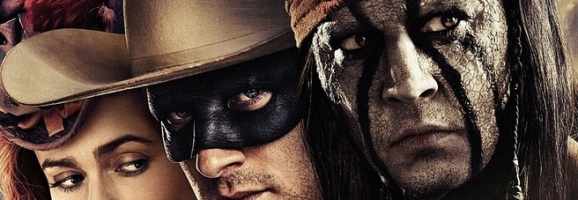
5. Adaptation and Modernization handled with Respect, Admiration and Wit
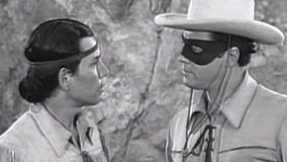 I wish that each filmmaker approaching a new film would understand that their job is not simply to blow the lid off of an old storytelling tradition, but also to pick up the baton of that tradition and find a way to add to that tapestry with their modern perspective. Any random deranged twist to the style is not going to overshadow the legendary status of the genre itself. Sam Mendes making Skyfall, or J.J. Abrams making Star Trek managed to fathom the stylistic traditions of the entire franchise that have already been molded, as Gene Roddenberry or Albert Broccoli couldn’t possibly see their stories as they we’re in the process of making them from scratch — and, in the same process as The Artist, tell the penultimate version of that kind of story — the perfect ‘James Bond story’, the perfect ‘Star Trek story’ — they did not set out to redefine what Bond or Trek meant, they humbly delivered at the feet of the great men who actually birthed these iconic stories a modern presentation, a refined gem.
I wish that each filmmaker approaching a new film would understand that their job is not simply to blow the lid off of an old storytelling tradition, but also to pick up the baton of that tradition and find a way to add to that tapestry with their modern perspective. Any random deranged twist to the style is not going to overshadow the legendary status of the genre itself. Sam Mendes making Skyfall, or J.J. Abrams making Star Trek managed to fathom the stylistic traditions of the entire franchise that have already been molded, as Gene Roddenberry or Albert Broccoli couldn’t possibly see their stories as they we’re in the process of making them from scratch — and, in the same process as The Artist, tell the penultimate version of that kind of story — the perfect ‘James Bond story’, the perfect ‘Star Trek story’ — they did not set out to redefine what Bond or Trek meant, they humbly delivered at the feet of the great men who actually birthed these iconic stories a modern presentation, a refined gem.
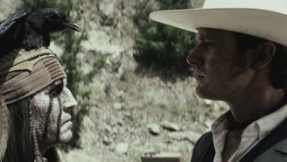 Just as Hazanavicius had to size up his subject matter and calculate his 21st-century version tribute — Gore Verbinski and Jerry Bruckheimer (and the screenwriters Justin Hayth, Terry Rossio & Ted Elliot) had to consider what was at the core of the old Lone Ranger radio and television series’ success. I’ve seen a fair amount of the original TV show — of course it is dated and repetitive, but if you respect it and take it seriously you see it not only as the story of 2 counter-culture outlaw vigilantes presented as heroes, but furthermore, 2 of the most iconic American characters worldwide of all time. Not unlike Batman and Robin, the Lone Ranger and Tonto have sacrificed their entire existence to instead fight for an ideal justice that the government’s legal and police systems no longer provide. The key feature of this franchise’s appeal is the certainty established in the viewers’ minds that Tonto and The Lone Ranger have got each other’s backs. They are one of the great teams of history — Holmes & Watson, Kirk & Spock, the Lone Ranger & Tonto. No matter what, they’ll outsmart the whole town or posse or cavalry, whoever it is this week. They’re unbeatable week after week because of their power to work as one mind. Though the weekly plots are mostly Cowboys versus Indians, the actual narrative of The Lone Ranger is how the cooperation of a Cowboy and an Indian can outwit all others.
Just as Hazanavicius had to size up his subject matter and calculate his 21st-century version tribute — Gore Verbinski and Jerry Bruckheimer (and the screenwriters Justin Hayth, Terry Rossio & Ted Elliot) had to consider what was at the core of the old Lone Ranger radio and television series’ success. I’ve seen a fair amount of the original TV show — of course it is dated and repetitive, but if you respect it and take it seriously you see it not only as the story of 2 counter-culture outlaw vigilantes presented as heroes, but furthermore, 2 of the most iconic American characters worldwide of all time. Not unlike Batman and Robin, the Lone Ranger and Tonto have sacrificed their entire existence to instead fight for an ideal justice that the government’s legal and police systems no longer provide. The key feature of this franchise’s appeal is the certainty established in the viewers’ minds that Tonto and The Lone Ranger have got each other’s backs. They are one of the great teams of history — Holmes & Watson, Kirk & Spock, the Lone Ranger & Tonto. No matter what, they’ll outsmart the whole town or posse or cavalry, whoever it is this week. They’re unbeatable week after week because of their power to work as one mind. Though the weekly plots are mostly Cowboys versus Indians, the actual narrative of The Lone Ranger is how the cooperation of a Cowboy and an Indian can outwit all others.
Albeit, in the original show, the balance is off — Tonto is too much the sidekick to the brave white man — but all the same, Tonto still has all the good ideas. For the 21st centuryization of the story, the writers establish this same necessity for cooperation between the two different men, but invert the power of the two — it is Tonto who puts up with the Lone Ranger as the man comes into his heroic role. Though the white men in the film still refer to Tonto as the masked man’s sidekick, this is never the image the audience gets as they watch this film, that could’ve been titled ‘Tonto’ — this is an even partnership.
4. The Return of the Fun Western
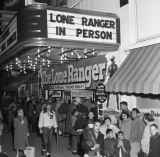 As each genre of cinema is being reestablished on this side of the millennia, it seems a general lens of grit must be thrown on top of each classic style. The western genre lately, both in cinemas and on TV, has become a parade of ever darker and gruesomer shows. It seems to justify your existence now in the 21st century you must show a certain amount of blood/cruelty/gore per minute, just so it’s all clear amongst us in the audience that you’re taking this genre somewhere it could never have gone in the past. I have no problem with ugly violence in a film, plenty of subject matters absolutely require it. To properly portray the themes of World War II, the Holocaust, Vietnam, Mafia wars, etc. a filmmaker simply must include a large heap of violence… but when we’re talking about Cowboys & Indians, the filmmakers are telling stories that are expansions on the make-believe games they played themselves as children. Kids don’t play these games because they uncover the horrible truths of man’s cruelty, they play them because they’re fun! Why strive in vain for profundity, when all we asked you for was levity. This isn’t Wagner or Bergman… it’s Cowboy & Indians! The Lone Ranger is the first western in a while that understands this, and actually delivers the product shown on the box, a fun adventure and spectacle in the Old West.
As each genre of cinema is being reestablished on this side of the millennia, it seems a general lens of grit must be thrown on top of each classic style. The western genre lately, both in cinemas and on TV, has become a parade of ever darker and gruesomer shows. It seems to justify your existence now in the 21st century you must show a certain amount of blood/cruelty/gore per minute, just so it’s all clear amongst us in the audience that you’re taking this genre somewhere it could never have gone in the past. I have no problem with ugly violence in a film, plenty of subject matters absolutely require it. To properly portray the themes of World War II, the Holocaust, Vietnam, Mafia wars, etc. a filmmaker simply must include a large heap of violence… but when we’re talking about Cowboys & Indians, the filmmakers are telling stories that are expansions on the make-believe games they played themselves as children. Kids don’t play these games because they uncover the horrible truths of man’s cruelty, they play them because they’re fun! Why strive in vain for profundity, when all we asked you for was levity. This isn’t Wagner or Bergman… it’s Cowboy & Indians! The Lone Ranger is the first western in a while that understands this, and actually delivers the product shown on the box, a fun adventure and spectacle in the Old West.
3. Standing on the Shoulders of Giants, and Enjoying the View as Your Own
Now now, we’re all guilty of it. But when you’ve earned it, you’ve earned it. The Artist did, and The Lone Ranger deserves as much recognition.
All arts (perhaps especially cinema) are created by men who have stolen ideas from older men — which is to say, the concocting of any individual “style” involves the incorporation of adopted traditions from each apprentices’ mentors, to a stew of their own ideas, experiences and “unique” changes he feels are necessary for his distinction — not that there’s anything wrong with that! All directors, from Woody Allen to Quentin Tarantino, pick and choose the stylistic flares of their artistic heroes (Allen’s: Bergman, Fellini, and Groucho Marx. Tarantino: Leone, Hitchcock and Jean-Luc Godard) and then use those tools to tell their kind of stories, 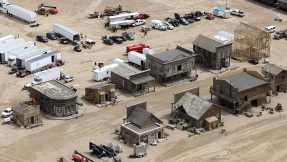 different stories than their heroes told, and this make them unique. So, Hazanavicius made a tribute to the Silent Era, one that would’ve made the silent greats proud (copying is the greatest compliment), and then he enjoyed the applause and awards.
different stories than their heroes told, and this make them unique. So, Hazanavicius made a tribute to the Silent Era, one that would’ve made the silent greats proud (copying is the greatest compliment), and then he enjoyed the applause and awards.
But when Bruckheimer and Verbinski achieve the exact same feat, taking the classic aesthetics of The Lone Ranger and creating their own modern realization, they receive nothing but blind criticism deserving a Fast & Furious sequel or yet another colossal superhero popcorn-seller. Here is an Epic Western, whose large budget was not used solely for CGI but instead to actually create a genuine monumental spectacle. Instead of millions of dollars wasted to make a glorified computer game with A-list actors, 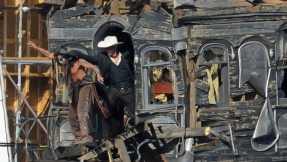 Bruckheimer and Verbinski created a tribute to the films of John Ford, John Huston, John Wayne — all the Johns! — all of the Golden Hollywood Westerns, with the budget spent properly on sets, costumes, and practical effects. I think a Disney Summer Action Flick that more closely resembles the production of Les Miserable than Man of Steel deserves some acknowledgement for that achievement.
Bruckheimer and Verbinski created a tribute to the films of John Ford, John Huston, John Wayne — all the Johns! — all of the Golden Hollywood Westerns, with the budget spent properly on sets, costumes, and practical effects. I think a Disney Summer Action Flick that more closely resembles the production of Les Miserable than Man of Steel deserves some acknowledgement for that achievement.
2. Not afraid to make the Americans the Bad Guys
In a time full of mistrust of the white men in suits who do their own brand of rustling in Washington D.C., here is a story presented for whole families to take in together an honest counter-culture and counter-establishment perspective on America’s proud history — a history yielded by corrupt white bureaucrats using the American army as their muscle, disguising their greed as patriotism and defense of the American Constitution. The winners wrote our history books — The Lone Ranger offers just a glimpse of the stories of injustice our winners left out of those books.
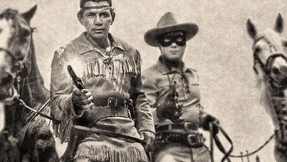 Disney has done a wonderful job, in a summer action/adventure romp for families and kids, they managed to include a lesson for today’s young in the ugly realities of our glorified history. On similar ground as Disney’s 1995 classic ‘Pocahontas’, now in live-action the cruelty and savagery of our American ancestors is made all the more tangible. In the times of Occupy Wall Street and all sorts of spreading feelings of rebellion against corruption what is the message of our masked duo, disguised as outlaws? — the Good Guys sometimes look like criminals — it’s quite impressive and surprising this semi-anarchist story came out of America’s Disney Studios, and it is the visionary voices of Bruckheimer and Verbinski that made it possible.
Disney has done a wonderful job, in a summer action/adventure romp for families and kids, they managed to include a lesson for today’s young in the ugly realities of our glorified history. On similar ground as Disney’s 1995 classic ‘Pocahontas’, now in live-action the cruelty and savagery of our American ancestors is made all the more tangible. In the times of Occupy Wall Street and all sorts of spreading feelings of rebellion against corruption what is the message of our masked duo, disguised as outlaws? — the Good Guys sometimes look like criminals — it’s quite impressive and surprising this semi-anarchist story came out of America’s Disney Studios, and it is the visionary voices of Bruckheimer and Verbinski that made it possible.
While most critics have decided to have the opinion that The Lone Ranger’s presentation of Native American history (as oppose to “U.S. History”, as our kids are taught in school) was hollow or sanctimonious, I saw the work of good entertainers taking on an uncomfortable subject matter (brushed under the carpet by the franchise’s predecessors) and properly portraying Tonto’s life as continuously destroyed by the “Pioneers”. I find it ingenious to retell the most iconic Cowboys & Indians legend in cinematic history to modern audiences from the Native American’s perspective. In scenes of battle, Bruckheimer and Verbinski create a scene of utter brutality, and were not afraid to make the American soldiers, the US flag shining proudly on their lapels, as the ruthless, heartless bad guys, inhumanely slaughtering an entire tribe of people in the name of greed. In doing such, the filmmakers use the empathy they’ve created to bring up a question in every audience member’s mind, young or old, a question that they should be asking themselves — are our armies today like our armies then?
After all, how better to understand the decisions made by men today than by understanding the decisions they made yesterday? However while not simply throwing the blanket of stereotype in the other direction and painting all white men as evil, the film portrays a full social sphere based on one’s treatment of “the Savages” — one that even our “heroic” lead white man and his “Indian” partner must decide their place in.
1. A Hero Character who is Against Guns
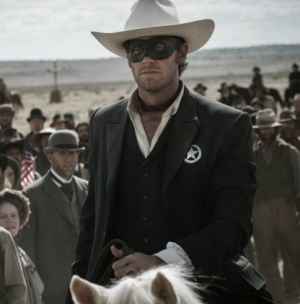 Maybe it’s not a big deal, but this is a Summer-Action-Packed-Mega-Budget-Blockbuster-Action-movie…where the lead character is opposed to GUNS?…I think that’s really something. In a summer of endless testosterone surged violence-operas, this story offers instead a side-narrative of the Lone Ranger’s insistent refusal to use gun violence to bring the villain to justice. At the heart of this character is a portrayal of the American Idealist, self-righteous yet noble believer in the lofty virtues of the Constitution. “Modelled as a role for a young Jimmy Stewart”, as the screenwriters have said, the ex-District Attorney-turned-Lone Ranger is a believer above all else in the due process of the Law and the power held only by the State’s legal system to pass judgement on a crime and deliver justice. But you won’t find many more heroes with a conscience like The Lone Ranger in this year’s line up, packed with Die Hard-Fast & Furious-Iron Men & Men of Steel-GI Joes: Retaliating with a Bullet to the Head Into Darkness & Oblivion, who lest we forget, manage taking down both the White House and Olympus. I mean honestly, the narrative of White House Down is how Jamie Foxx’s Obama stand-in has to learn to be less of a pacifist and pick up a gigantic machine gun to save the day…geez. It seems like the only solution to how Hollywood can end a story these days is just “Eh, throw more bullets at it.” The Lone Ranger is a real story where a human being’s death is not simply a special effect.
Maybe it’s not a big deal, but this is a Summer-Action-Packed-Mega-Budget-Blockbuster-Action-movie…where the lead character is opposed to GUNS?…I think that’s really something. In a summer of endless testosterone surged violence-operas, this story offers instead a side-narrative of the Lone Ranger’s insistent refusal to use gun violence to bring the villain to justice. At the heart of this character is a portrayal of the American Idealist, self-righteous yet noble believer in the lofty virtues of the Constitution. “Modelled as a role for a young Jimmy Stewart”, as the screenwriters have said, the ex-District Attorney-turned-Lone Ranger is a believer above all else in the due process of the Law and the power held only by the State’s legal system to pass judgement on a crime and deliver justice. But you won’t find many more heroes with a conscience like The Lone Ranger in this year’s line up, packed with Die Hard-Fast & Furious-Iron Men & Men of Steel-GI Joes: Retaliating with a Bullet to the Head Into Darkness & Oblivion, who lest we forget, manage taking down both the White House and Olympus. I mean honestly, the narrative of White House Down is how Jamie Foxx’s Obama stand-in has to learn to be less of a pacifist and pick up a gigantic machine gun to save the day…geez. It seems like the only solution to how Hollywood can end a story these days is just “Eh, throw more bullets at it.” The Lone Ranger is a real story where a human being’s death is not simply a special effect.
Does The Lone Ranger have it’s flaws? Oh sure.
Does The Artist? Oh yeah.
Does The Artist have much, much fewer flaws than The Lone Ranger? Oh absolutely, and The Artist is a better film for it, of course… but, I cannot help seeing these films as sisters, in the same family as Skyfall, Star Trek, The Artist and all recent movies that capitalize on our fondness for the great stories of the past, and that while revolving around that nostalgia implement creative and magical modern filmmaking styles to create a polished salute to the old masters.
Don’t believe the critics. The Lone Ranger is great fun. Hi-Yo Silver! Away!
What do you think? Leave a comment.










This movie was certainly different. It is a well made production for sure with a lot of very well staged action. However, the action did get a bit ridiculous and overblown. To compensate for this it seems that Johnny Depp played kind of a clown version of Tonto, in the same way he was a clownish pirate in Pirates of the Carribbean. That’s not too surprising considering that some of the people involved with Pirates made this movie. They were obviously trying to duplicate the success of the pirate films. In doing so here they made one huge error. The error was in using such an iconic story without considering that too many people would be disappointed. By contrast, in the pirate films they invented a new icon, so to speak, while it could be said here that they are trying to destroy one.
Depp couldn’t run away from Jack Sparrow.
What the heck were these co-called critics looking for with this movie? I enjoyed the heck out of it and appreciated the obvious effort which went in to making this production. Good rapport between the two leads, along with a very interesting story-line. The support cast was also excellent with special mention to Helena Bonham Carter and Barry Pepper. What is there not to like? Got what I payed for!
I’ll be booking tickets for this, do not disappoint me. 😉
I admire your willingness to make a case for The Lone Ranger by comparing it to The Artist. The idea is probably as radical as the time I heard someone compare Paris Hilton to Virginia Woolf.
Great article! And I totally agree. I still haven’t seen the film yet, but from the negative feedback I have been hearing I can tell that people are being caught up in their own pretentious crap ha ha This movie does all of what you say. In many ways it could be considered a generic action movie, but in a lot of other ways (as you have mentioned) it explores so much more than that.
I love how bold the title of this article is. I scrolled past it and I was just like “oh yeah, I got to see what this guy has to say.” You still haven’t sold me on The Lone Ranger, but you make good points. Nicely done.
I’m yet to see the film, but I agree with your comment about ‘grit’ being imposed on each genre to reinvent it. We haven’t seen a purely fun, comedic Western since Shanghai Noon.
While I disagree about the quality of The Lone Ranger (I thought the best part of the film was that there was a cricket in the theater I was in so everyone was given a free popcorn coupon), you do pose an interesting argument. I personally thought the film was about 40 minutes too long and the decision to make the story a sort of revisionist history told through the eyes of Johnny Depp ended up interrupting the flow of the film more than adding anything to it. It was as if they just wanted more screen time for Johnny Depp.
I would caution against using IMDB scores for making a case for a film though. They tend to run high anyways or the folks casting their votes care too much one way or the other and will rank a film lower just to try to lower the total score or vice versa.
Agree with your last point. There is much more of a selection bias with user ratings on IMDB and Rotten Tomatoes. With critics’ aggregate ratings, you’re throwing that bias out the window, because critics see and rate practically every movie.
Interesting argument. I’m glad that writers are taking fun and ‘outside the box’ topics by the horns and clearly explaining why they believe what they believe to be true.
I saw the movie 21 or 22 times this summer (I lost count). This movie patiently showed the audience a marvelous metamorphosis of a man–the Lone Ranger. And even Tonto transformed his beliefs into a more realistic interpretation of his life’s circumstances. This movie hit me right as I had a very despairing summer…Thank you Disney et al! The Lone Ranger’s low approval rating simply demonstrates the average American movie goer’s lack of sophistication and humor…so sad!
I agree! They should rerelease it like this!
https://vimeo.com/108435479